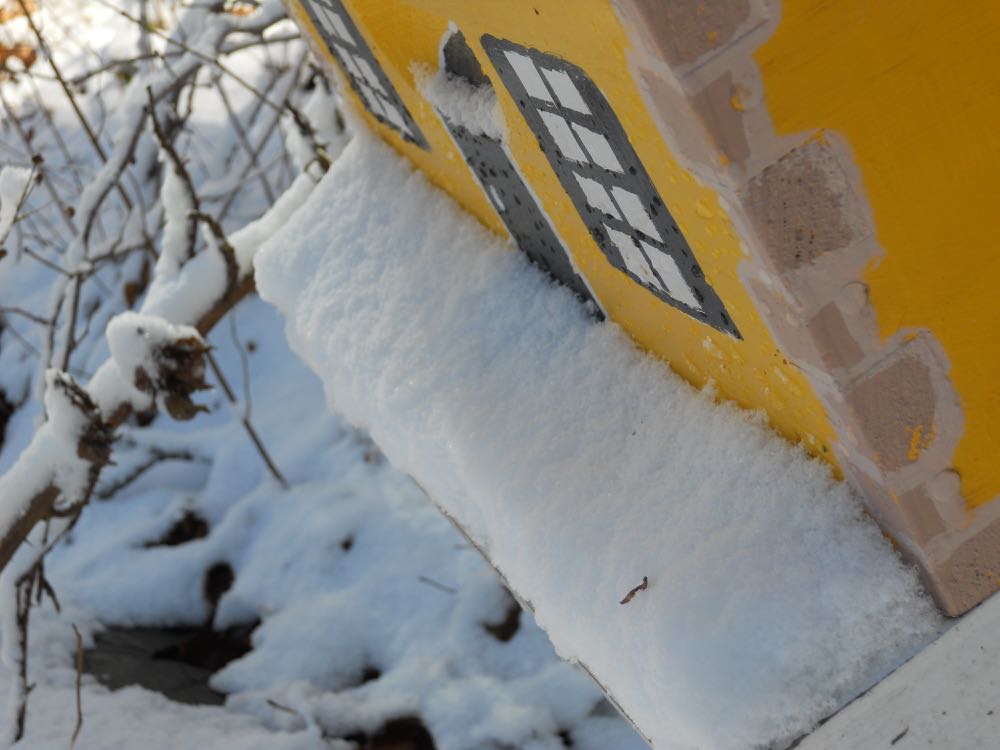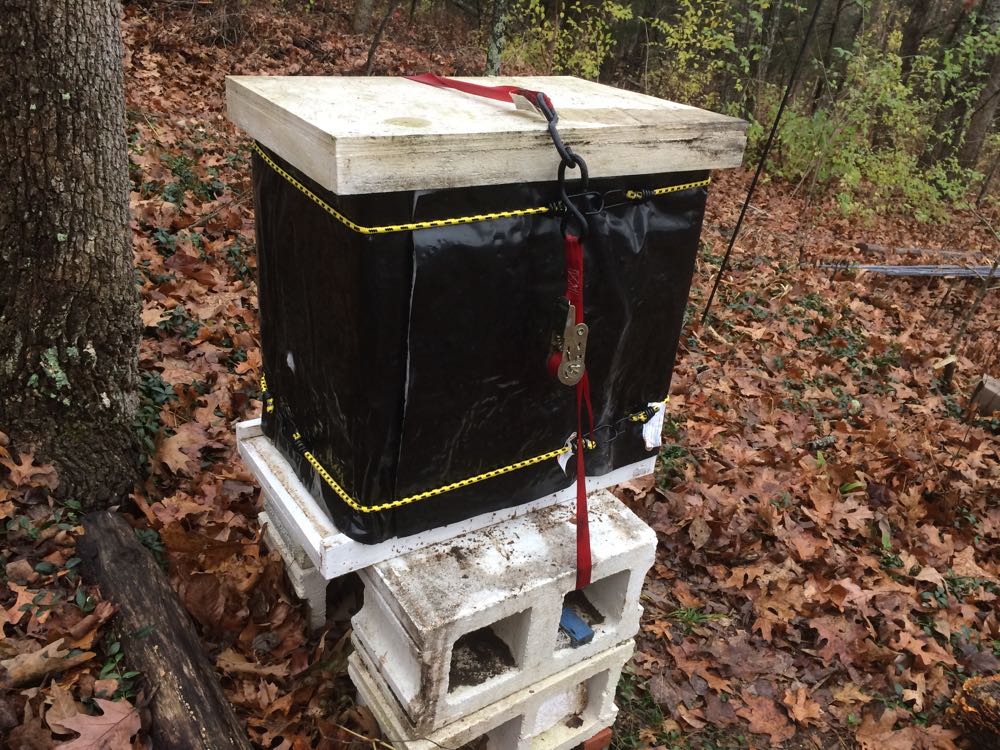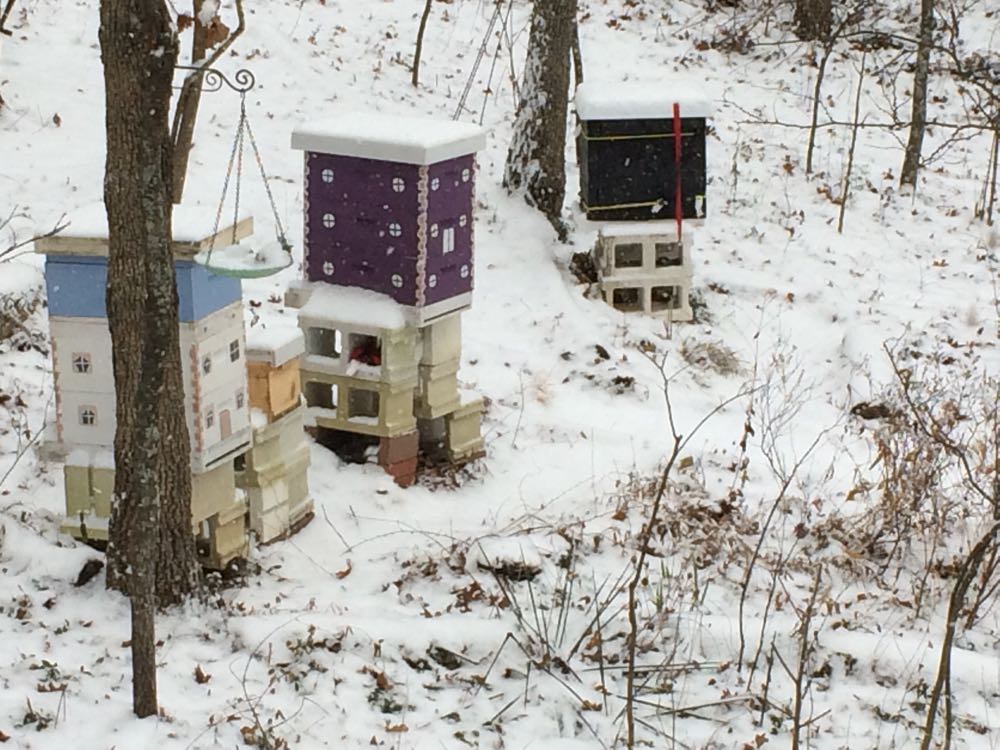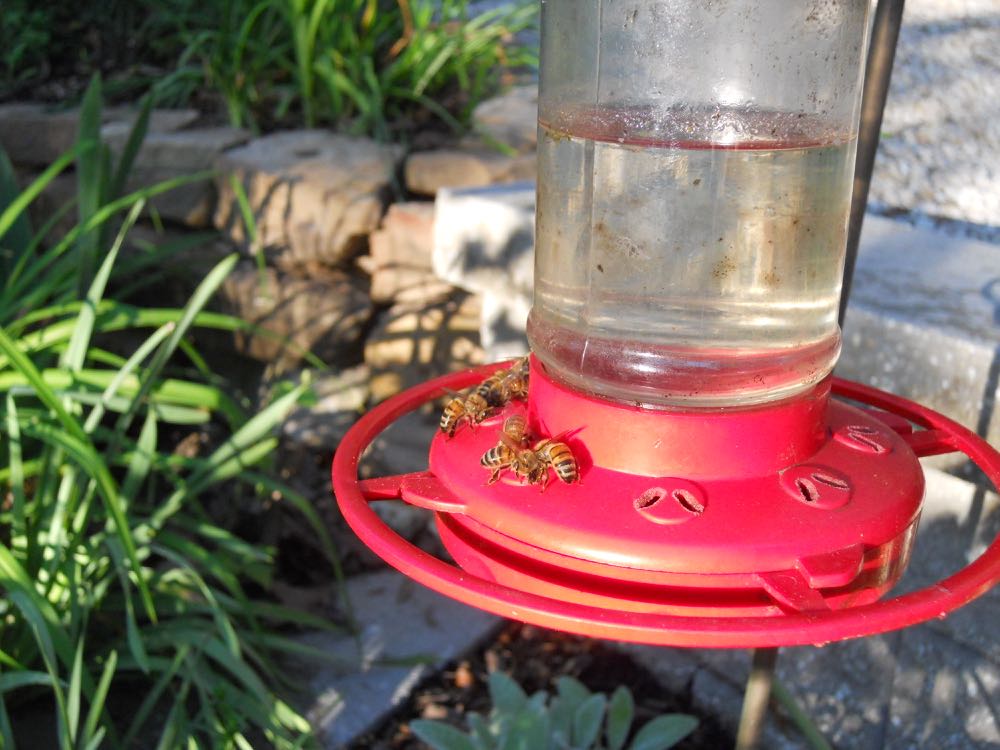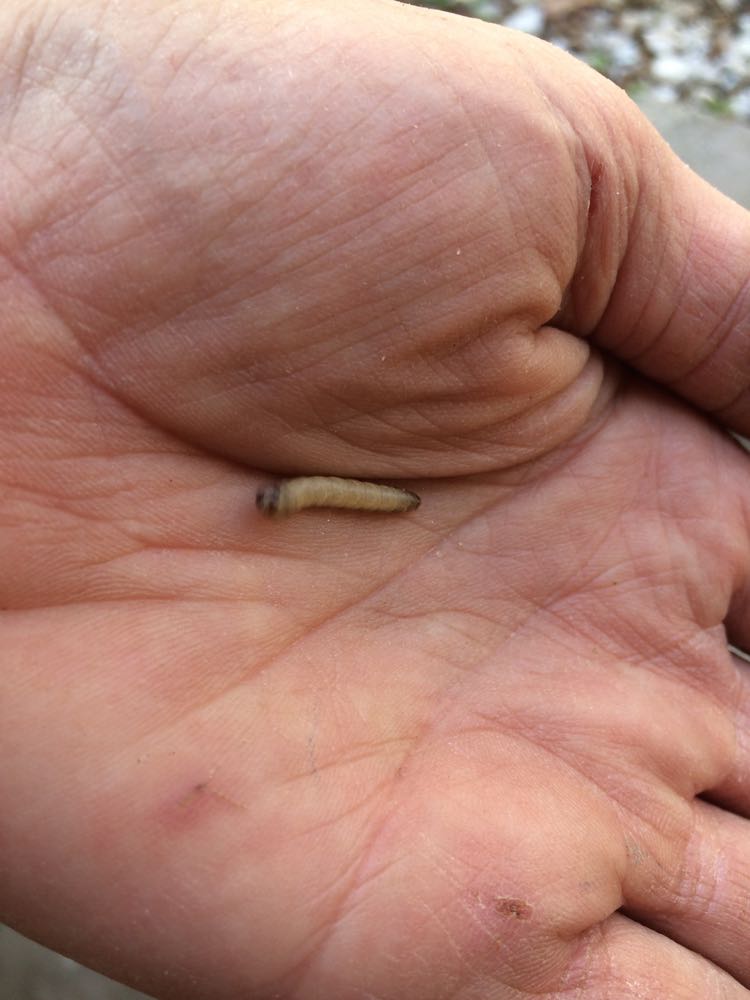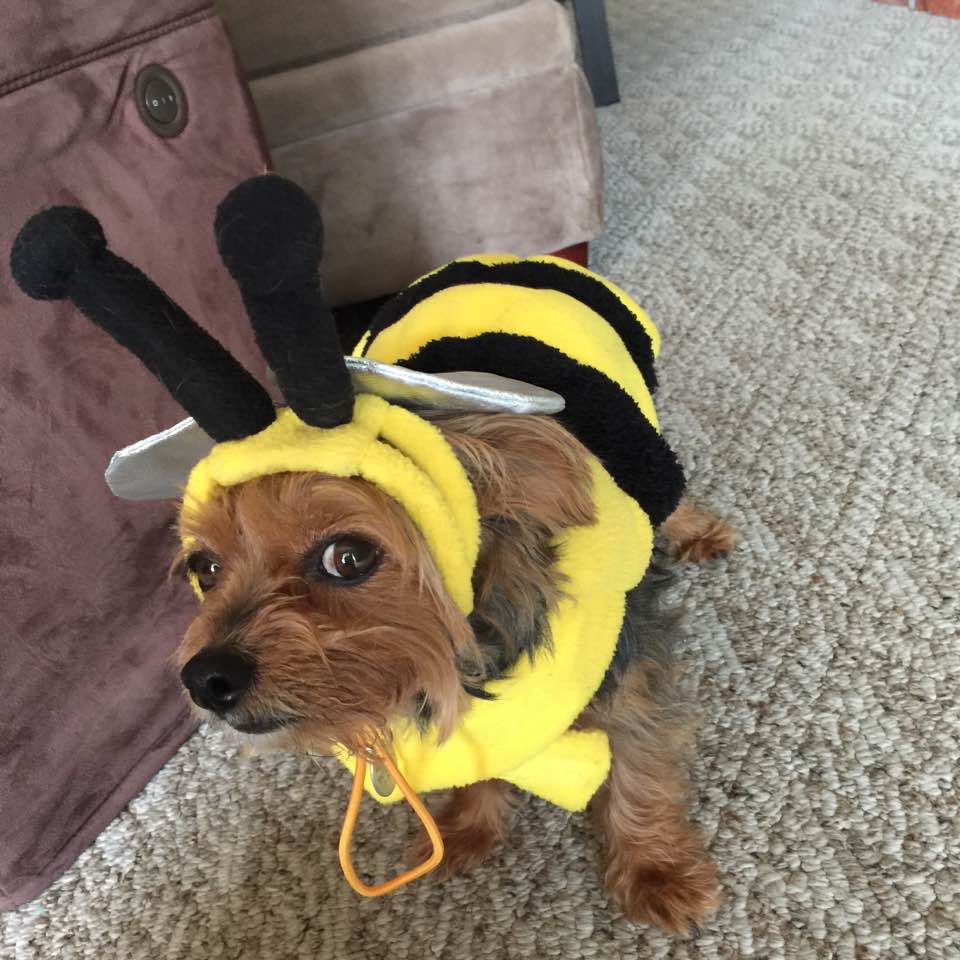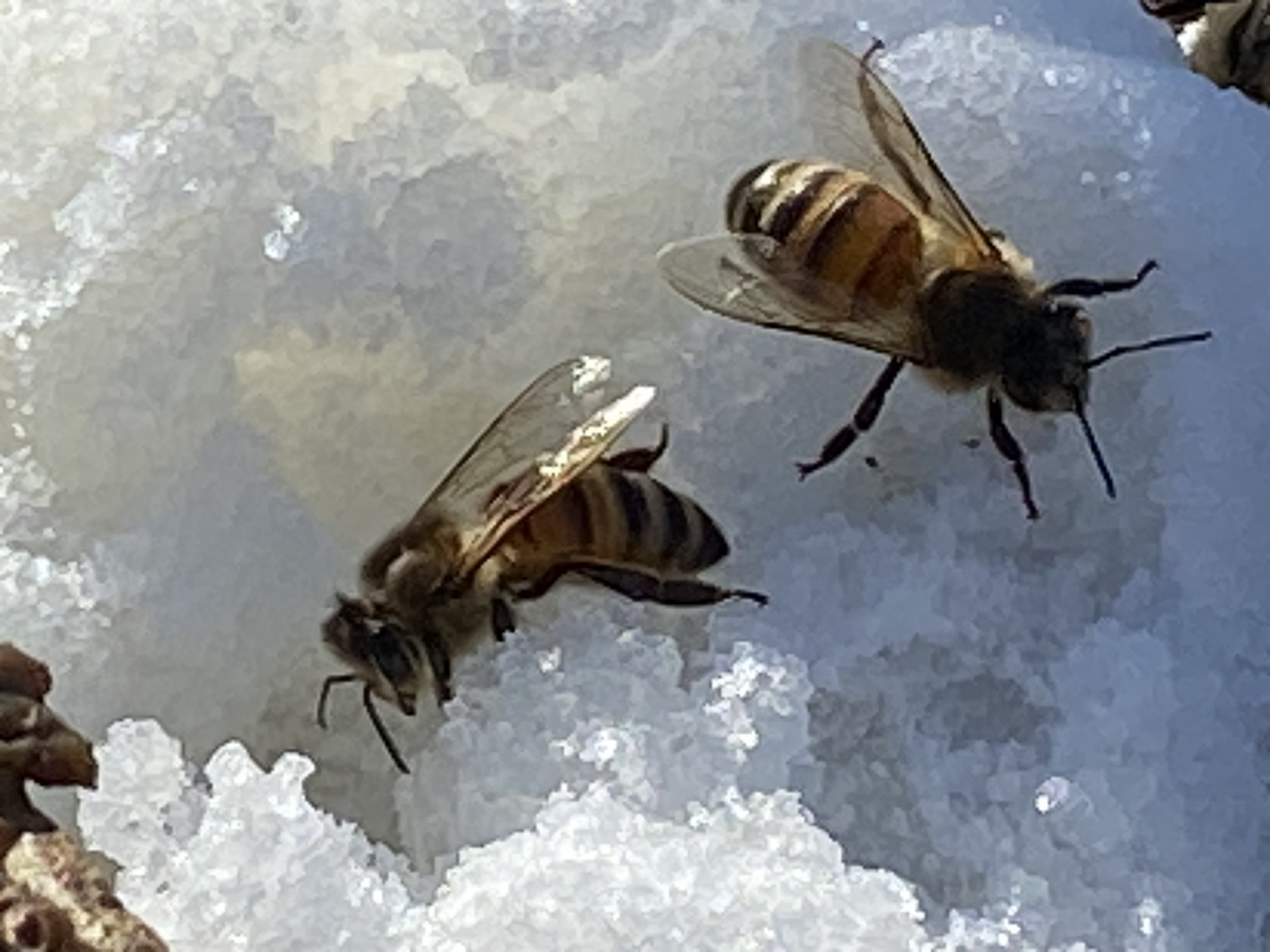Winter Colony Cluster Check
/Checking for a colony cluster can be as simple as lifting the hive top quickly and finding heat.
Winter Colony Cluster Check
I sometimes cringe when beginning beekeepers contact me after they've opened their hives mid-winter to see if their honey bees are still alive. Even though I repeatedly remind everyone not to break the propolis seals bees have built and not to touch the hives after October, there are always a few who rationalize why they did what they did, then wonder later why their bees didn't make it through winter.
It's hard to not check, I know but if you must, still don't break open the hive and destroy the propolis seals. That's how the bees make their hives airtight for winter. When the propolis seals are broken, the bees don't have the time to make repairs and the open cracks in hives then let in cold, wind and especially rain, which can quickly kill a bee colony.
The only relatively safe thing you can do to check if the bees are alive is to peek under the lid and, with your bare hand, try to locate the heat the cluster is generating inside the hive.
Honeybees don't hibernate through winter, they literally shiver in a cluster with the queen in the middle, consuming the honey they made earlier in the season for carbs and energy. It's amazing to think those little creatures can keep the hive so warm.
Once you locate the heat, close it up, you have your confirmation that the colony is still alive.
The honeybee cluster can generate a lot of heat that's easy to find with your hand.
The day before our late December winter storm forecast, I decided to check on hive stores. This year I gave each colony 2 medium supers full of honey instead of one per colony since last year the colonies were at the top of the hive at Christmas. Late falls and warm winter temperatures mean bees are out flying and consuming their honey at a faster rate than when they are clustered. I didn't want to find any colonies dead from starvation so I took my extra sugar cake supply with me just in case I found a cluster on top.
Sure enough, the last colony I checked was at the top, festooning off the screened inner cover I was also going to change to solid inner covers.
This is another colony with the cluster at the top and into the emergency sugar cakes.
Not wanting to disturb the bees any more than necessary, I snuck the sugar cake bar over the cluster and closed the hive lid for a few minutes.
I gave them an extra cake first on top of the wired inner cover to get them settled.
When I returned a few minutes later, I was able to sneak the old sugar cake out and place the new one right over the cluster with little fuss.
When I checked a few minutes later, the bees were checking out the sugar cake.
I was able to quickly sneak the sugar cake under the wired inner cover with little disturbance.
The few bees that flew up when I took off the screened inner cover were heading back inside the hive, with only one bee that needed a personal escort to find the hive entrance.
The few bees that flew out of the top were quickly going back in through the bottom entrance.
As I refilled the bird feeders and suet holders, I forgot to replace the screened inner covers with solid inner covers until later that evening. With my flashlight as a guide, I quickly removed the screened inner covers and added the solid ones. At that point, even this yellow hive didn't have any bees at the top so it was easy enough to quickly make the switch.
Temperatures are below zero at night now. It's still tempting to want to go out and check the bees but I know they are snug in their homes with enough food so I won't until our next day with the temperature in the 50s. It will be a good time to check on food stores then to make sure they all have enough food to make it into spring.
Spring. Can't wait to see it!
Charlotte








